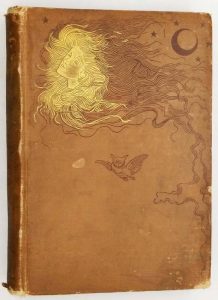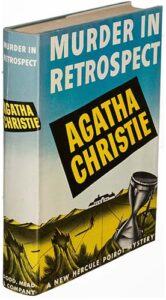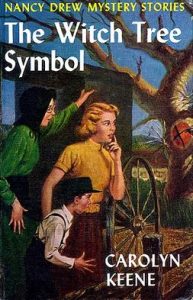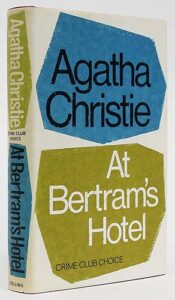The Clue of the Tapping Heels is the 16th volume in the Nancy Drew Mystery Stories series. It was first published by Grosset & Dunlap in 1939, written by Mildred Benson under the pseudonym Carolyn Keene and first published in 1935. . An updated, revised, and largely different story was published under the same title in 1970. A facsimile edition of the 1939 version was published by Applewood Books. As of 2006, this title is still in print.
Summary (original edition)
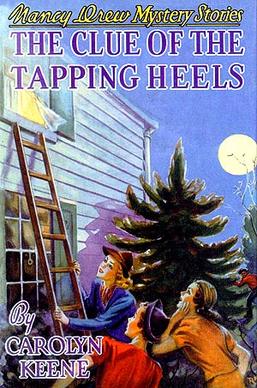
In The Clue of the Tapping Heels , a rhythmic tapping in the night leads Nancy Drew into a Depression-era mystery where the glittering world of vaudeville collides with small-town desperation. The story opens with elderly Miss Carter, a retired dance instructor, reporting strange occurrences in her shuttered Victorian home—mysterious footsteps echoing her late father’s distinctive tap routine, prized Persian cats disappearing from locked rooms, and a shadowy figure glimpsed practicing dance steps in the moonlit parlor.
Nancy’s investigation reveals the house’s connection to fading vaudeville circuits, where Miss Carter’s father once headlined as “Tapping Tex” and may have hidden a fortune in theater earnings. The young detective deciphers clues encoded in old playbills, recognizes how the home’s peculiar acoustics amplify specific floorboards, and discovers that the missing cats’ jeweled collars contain more than decorative value. As the tapping grows more insistent, Nancy uncovers a ring of burglars using the house’s reputation for “ghostly dancers” to cover their operations, their movements timed to mimic phantom performances.
The 1939 original vibrates with the end-of-an-era melancholy of vaudeville’s decline—the way Miss Carter absentmindedly marks dance steps with arthritic hands, the yellowed programs advertising acts now playing “the big circuit in the sky.” Unlike later revisions, this version retains gritty period details: Nancy follows a trail of ration coupons to track the criminals, recognizes Depression-era pawnshop codes in stolen goods, and confronts the emotional truth that some performers would rather be remembered as ghosts than fading stars. The climax unfolds during an impromptu tap performance where Nancy must distinguish between four identical-sounding pairs of heels—three belonging to criminals and one to a remorseful accomplice seeking redemption.
This novel stands out for its poignant soundtrack of a bygone America—the syncopated rhythm of the tapping heels serving as both clue and requiem for vanished glamour. Nancy’s ability to listen closely to these fading echoes, both literal and cultural, makes this one of the series’ most atmospheric Depression-era time capsules.
Nancy Drew #16 –The Clue of the Tapping Heels First Edition Book Identification
Only the first few printings of the first/second year are shown. Printings codes are based on the Farrah Guide, 12th printing. Please refer to the guide for later printings.
Note: Glossy+: Glossy frontis + 3 glossy internals.
| Printing | Frontis | Copyright Page | Rear Book Ads |
|---|---|---|---|
| 1940A-1 | Glossy | Nancy Drew #1-17 | None |
| 1940B-2 | Glossy | Nancy Drew #1-17 | None |
| 1940C-3 | Glossy | Nancy Drew #1-17 | None/Page 220 include next book |
Nancy Drew #16 –The Clue of the Tapping Heels First Edition Dust Jacket Identification
| Printing | Price | Front Flap | Rear Panel | Rear Flap | Format |
|---|---|---|---|---|---|
| 1939A-1 | 5050 | Nancy Drew #1-16 | Melody Lane #1-7 | Dana Girls #1-7 | 4 |
| 1939B-2 | 5050 | Nancy Drew #1-16 | Melody Lane #1-7 | Dana Girls #1-8 | 4 |
| 1939C-3 | 5050 | Nancy Drew #1-16 | Melody Lane #1-7 | Dana Girls #1-8 | 5 |
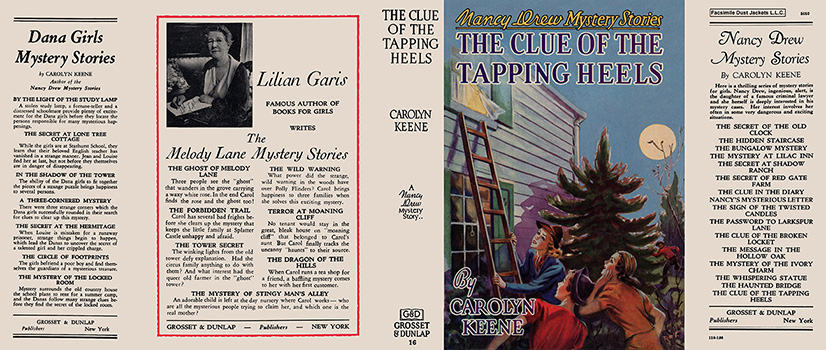
Reference:
- Farah’s Guide to Nancy Drew, 12th printing
